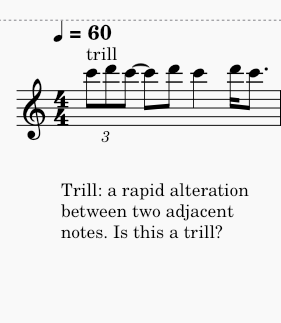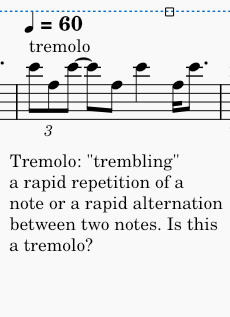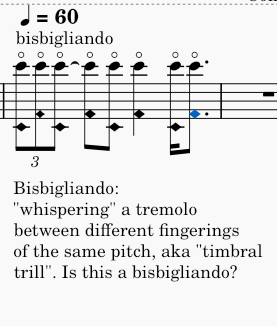Let’s do some logic:

I assume the answer is “no” – at tempo = 60 this is not really rapid.

Again my guess is “no”, neither the notation nor the tempo would qualify this as a tremolo.

Again the logical conclusion is “no”. It does not fit the criteria for a tremolo or a trill.
So why do we sometimes encounter this notation shown above? Slow-moving harmonic changes are in no way a tremolo, trembling, or whispering, therefore, not bisbigliando. So I would genuinely love to know why this notation above persists; why is the term “bisbigliando” written sometimes over slow harmonic changes? Why does this continue to be taught, where does this tradition come from, and what kind of logic it is based on?
Please, convince me!
Here are some reasons why this notation is problematic. In essence, this is a term for harp players. A little appropriation among musical terms is fine, but I think this extrapolation meaning “any movement between harmonics regardless of context” is misleading. Sometimes a passage can be played with a change in harmonics AND bisbigliando/timbre trill, therefore it makes more sense to be specific. Do you want the slow change of harmonics? Do you want a timbral trill? Do you want both?
So if you don’t really want a timbral trill, what would you write in the passage shown above? The good news is: nothing! You don’t need a descriptive word or any notational elaborations, because the notation speaks for itself. If you want a descriptive word, perhaps use “sotto voce”, “lontano”, “quasi niente” or something to that effect, if it is something atmospheric you are after.
Leave a Reply